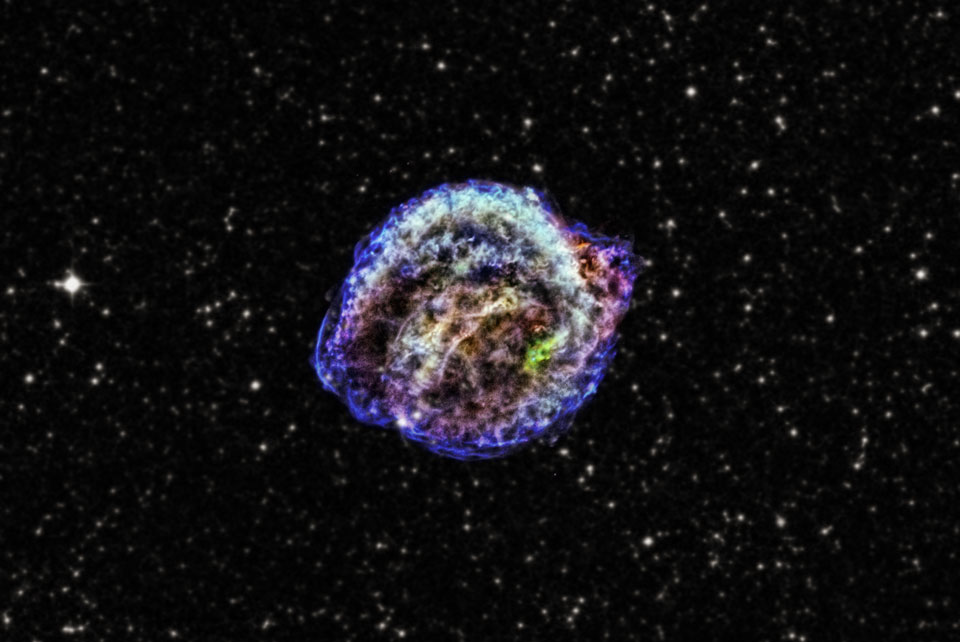

Copernicus's Quest for Deeper Harmony and OrderĬopernicus anticipated his ideas would be controversial. Looking back on these advances, exactly whose revolution was it? Or, given that each of these astronomers worked in ongoing traditions of modeling and understanding the heavens, was there a revolution at all?īy briefly reviewing the works of Copernicus, Brahe and Kepler this essay offers you the chance to develop your own answer to these questions. Similarly, Johannes Kepler developed mathematical models for elliptical orbits that challenged some of the core assumptions of Aristotelian cosmology. For example, Tycho Brahe collected observational data at an unprecedented scale, and developed his own competing model.
#Nasa picture of the day kepler series
Second, although Copernicus' sun centered model was revolutionary it was part of a series of early modern and renaissance innovations. First, as much as Copernicius' ideas broke with the past, his model of the cosmos has more in common with his contemporaries than it does with modern day astronomy and physics. The story of this revolution is problematic for several reasons. Copernicus' contributions to astronomy are so significant that they warrant their own term: The Copernican Revolution. The aeroshell should protect the descent module from the initial shock and heat of entry, which will initially create an intense fireball, over twice as hot as the surface of the Sun.Copernicus is often described as a lone astronomer who defiantly argued that the sun, not the Earth was at the center of the cosmos. Pictured here before launch, the probe descent module (top)is suspended above its deceleration module aeroshell (bottom) prior to being joined. If all goes well, it will then deploy a parachute and descend, using sophisticated instruments to profile Jupiter's dense outer layers of hydrogen and helium gas. The probe will smack Jupiter's atmosphere at over 100,000 mph slowing to less than 1,000 mph in a matter of minutes, experiencing a deceleration of about 230 times the Earth's surface gravity. Released by the Galileo orbiter in July of this year, it has been coasting toward its rendezvous with the Solar System's largest planet. Today, at about 5:00 pm EST, this 750 pound probe from NASA's robot spacecraft Galileo will plummet into Jupiter becoming the first probe to fly through the atmosphere of a gas giant planet.

That makes nighttime images of our fair planet among the most interesting and important views from space. Easy to recognize here, city lights identify major population centers, tracking the effects of human activity and influence across the globe. While the space station passes over the same point on Earth every two or three days, Suomi-NPP passes over the same point twice a day at about 1:30am and 1:30pm local time. It also has advantages compared to cameras on the International Space Station. VIIRS offers greatly improved resolution and sensitivity compared to past global nightlight detecting instrumentation on DMSP satellites. The images were collected during April and October 2012 by the Suomi-NPP satellite from polar orbit about 824 kilometers (512 miles) above the surface using its Visible Infrared Imaging Radiometer Suite (VIIRS). This remarkably complete view of Earth at night is a composite of cloud-free, nighttime images. Image Credit : NASA, NOAA NGDC, Suomi-NPP, Earth Observatory Data and Processing: Chris Elvidge and Robert Simmon Classical novae are thought to recur when the flow of material onto the white dwarf eventually resumes and produces another outburst. The cataclysmic blast results in a drastic increase in brightness and an expanding shell of debris. Material from the companion star builds up as it falls onto the white dwarf's surface triggering a thermonuclear event.

Caught by nova hunter John Seach from Australia on December 2 as it approached near naked eye brightness, Nova Cen 2013 has been spectroscopically identified as a classical nova, an interacting binary star system composed of a dense, hot white dwarf and cool, giant companion. In this night skyscape recorded near Las Campanas Observatory in the Chilean southern Atacama desert on December 5, the new star joins the old in the expansive constellation, seen at early morning hours through a greenish airglow. For now, so is new naked eye Nova Centauri 2013. labels.jpgImage Credit & Copyright: Yuri Beletsky (Las Campanas Observatory, Carnegie Institution)īrightest stellar beacons of the constellation Centaurus, Alpha and Beta Centauri are easy to spot from the southern hemisphere.


 0 kommentar(er)
0 kommentar(er)
